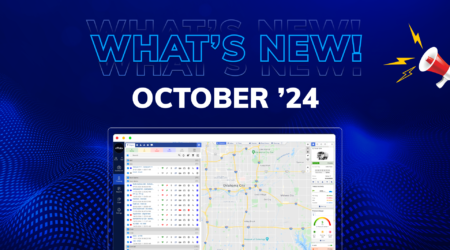The Essential Guide to Agriculture Vehicle Tracking
In the modern agricultural landscape, efficiency and productivity are not just goals; they are necessities for survival and growth. As farms and agricultural operations expand, the need to manage resources effectively becomes paramount. One technological advancement playing a pivotal role in transforming the agricultural sector is agriculture vehicle tracking. This guide delves into the essence of vehicle tracking in agriculture, underpinning the significant benefits it brings to the table, especially when integrated with advanced fleet management software.
Agriculture vehicle tracking systems are not merely about monitoring the location of tractors, harvesters, and other farm machinery; they are about harnessing data to drive decisions that optimize operations, enhance productivity, and save costs. By leveraging advanced fleet management software, farm owners and operators can gain unprecedented control over their vehicles, ensuring they are used efficiently, maintained properly, and secured against theft.
The Basics of Agriculture Vehicle Tracking
Agriculture vehicle tracking refers to the use of GPS and other technologies to monitor the location, movement, and status of vehicles used in farming and agricultural operations. At its core, the purpose of vehicle tracking is to enhance operational efficiency, ensure asset security, and optimize the maintenance and utilization of farm machinery. This technology enables farm owners and managers to keep a close eye on their fleet from anywhere, at any time, providing real-time data that is crucial for timely decision-making and resource allocation.
Types of Vehicles Tracked in Agriculture
The scope of agriculture vehicle tracking extends beyond tractors, encompassing a wide range of machinery vital to farm operations. This includes harvesters, sprayers, plows, and even smaller utility vehicles. Each vehicle type plays a unique role within the agricultural ecosystem, and tracking their performance and usage can significantly impact overall farm productivity.
Components of a Tracking System
An effective agriculture vehicle tracking system comprises several components, working together to provide comprehensive monitoring capabilities:
- GPS Devices: Installed on each vehicle, these devices capture location data, movement speeds, and sometimes additional information like fuel consumption and engine status.
- Sensors: For more detailed monitoring, sensors can be added to track specific data points, such as implement usage, hours of operation, and maintenance needs.
- Communication Network: This allows the collected data to be transmitted back to a central system, typically using cellular or satellite networks.
- Software Platform: The heart of the system, this software collects, analyzes, and presents the data to users. Advanced fleet management software goes beyond simple tracking, offering tools for data analysis, reporting, and even integration with other farm management systems.
The Role of Advanced Fleet Management Software
In the context of agriculture, advanced fleet management software transforms raw data into actionable insights. It not only tracks the location of vehicles but also analyzes usage patterns, optimizes routes, schedules maintenance, and even predicts potential breakdowns before they occur. This level of insight is invaluable for managing the complexities of modern agricultural operations, where efficiency and productivity are directly tied to the bottom line.
The introduction of such software into the agricultural sector marks a significant leap forward, providing a level of control and insight previously unattainable. With features designed to meet the unique needs of agriculture, including seasonality, crop cycles, and the vast geographical spread of operations, advanced fleet management software is tailor-made to enhance the efficiency and effectiveness of farm machinery management.
As we delve deeper into the benefits of vehicle tracking in agriculture, it’s clear that this technology, supported by sophisticated software platforms, is not just an operational tool; it’s a strategic asset that can drive significant improvements in agricultural productivity and sustainability.
Benefits of Vehicle Tracking in Agriculture
Increased Efficiency and Productivity
One of the most significant advantages of agriculture vehicle tracking is the substantial increase in operational efficiency and productivity it delivers. By providing real-time data on vehicle location and activity, farm managers can make informed decisions about resource allocation and deployment. This ensures that machinery is utilized to its fullest potential, minimizing idle time and optimizing work schedules. Moreover, tracking systems enable precise field navigation, reducing overlap and missed areas during planting, fertilizing, and harvesting, thus saving time and resources.
Cost Savings on Fuel and Maintenance
Fuel consumption is a major operational cost in agriculture. Vehicle tracking systems help in reducing this expense through efficient route planning and by monitoring driving behaviors that lead to excessive fuel use. Additionally, the ability to track and analyze vehicle usage patterns allows for a more proactive approach to maintenance. By identifying issues early and scheduling regular maintenance based on actual vehicle usage rather than fixed intervals, farmers can significantly reduce the likelihood of costly breakdowns and extend the lifespan of their machinery.
Enhanced Security and Theft Prevention
Agricultural equipment represents a substantial investment, and its security is a major concern for farm owners. Agriculture vehicle tracking systems offer enhanced security features, such as geofencing, which sends alerts if a vehicle moves outside of a predefined area, and immediate location tracking, which is invaluable in the event of theft. These features not only help in the quick recovery of stolen equipment but also act as a deterrent against theft in the first place.
Data-Driven Decision Making
The advanced analytics provided by fleet management software transforms raw data into actionable insights, enabling data-driven decision-making. This can cover a wide range of operational aspects, from identifying the most efficient routes and schedules to optimizing the timing and methods of field operations. By leveraging this data, farmers can achieve a deeper understanding of their operations. This leads to more informed decisions that enhance productivity and profitability.
Environmental Benefits
Vehicle tracking in agriculture also contributes to environmental sustainability. Efficient routing and field operations reduce fuel consumption and the carbon footprint of farming activities. Furthermore, precise tracking of farming practices helps in the better management of inputs, such as fertilizers and pesticides, minimizing runoff and environmental impact.
Integration with Other Systems
Advanced fleet management software often integrates seamlessly with other agricultural management systems, providing a holistic view of the farm’s operations. This integration enables the synchronization of vehicle tracking data with crop management, inventory, and financial systems. It offers a comprehensive operational overview that facilitates strategic planning and management.





